|
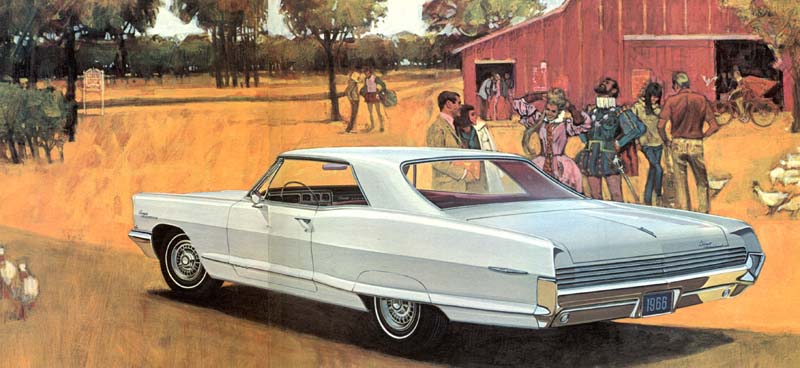
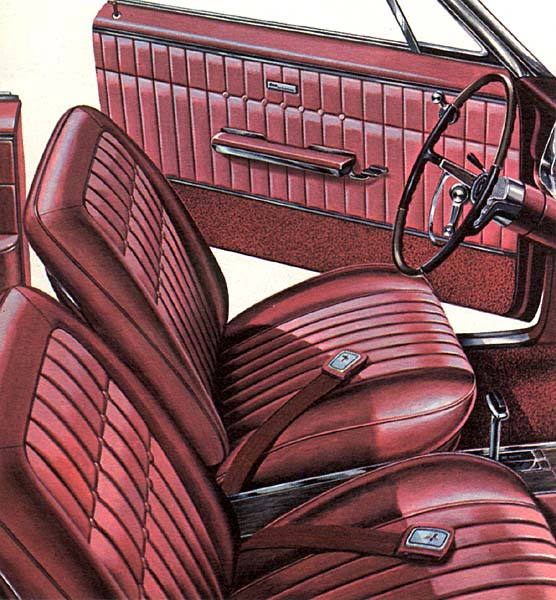 Next up in line was the Grande Parisienne, the last of the Canadian Pontiacs on offer in Europe. In Canada there was yet another full-size line called Strato-Chief, which was the entry level line over there and placed below the Laurentian in the hierarchy. This Strato-Chief was not available in Europe. Next up in line was the Grande Parisienne, the last of the Canadian Pontiacs on offer in Europe. In Canada there was yet another full-size line called Strato-Chief, which was the entry level line over there and placed below the Laurentian in the hierarchy. This Strato-Chief was not available in Europe.
There was nothing entry level about the Grande Parisienne. There was just
one body style: a 2-door Sport Coupe. The car was trimmed like the American Pontiac Grand
Prix, which topped the full-size line. Striking distinctions between the Grande Parisienne
and the Grand Prix were of course the name badges, but also the upholstery: the Grande
Parisienne had a vinyl upholstery where leather was optional in the Grand Prix. But the
biggest differences were under the hood because the Grande Parisienne had a totally
different engine/transmission combination compared to the Grand Prix.
The Grande Parisienne was fitted with a 5,358 cc V8 engine that produced 279 hp @ 4800 rpm, making it the most powerful unit available in the full-size line. In contrast to the American taste, but more in line with the European, was the standard 4-speed manual gearbox. An automatic Powerglide transmission was optional in the Grande Parisienne. Of course this luxury coupe offered all power assisted items available as standard. Measurements were the same as those of the Parisienne.
Compared to the Parisienne the Grande Parisienne had a far more luxurious
interior. The Grande Parisienne had as standard bucket-seats in front, a power seat on the
drivers side, power windows, an adjustable steering wheel, a radio with an electronically
operated antenna and a rear window heater. Only he cars fitted with a manual transmission
had an additional rev counter in the dashboard.
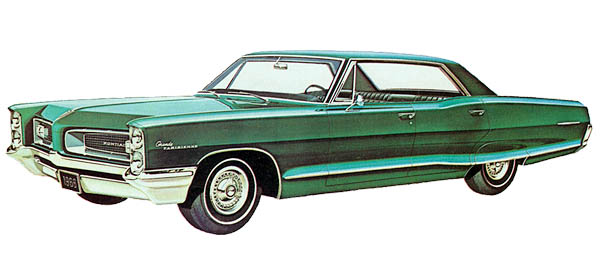 The Grande Parisienne Sport Sedan, the 4-door hardtop model, was only sold in Canada and is sort of an enigma these days. Relatively few were sold and since only the Sport Coupe was marketed internationally it is little known. The Grande Parisienne Sport Sedan, the 4-door hardtop model, was only sold in Canada and is sort of an enigma these days. Relatively few were sold and since only the Sport Coupe was marketed internationally it is little known.
In Canada the Grande Parisienne could also be had with a fully synchronized 3-speed manual gearbox, optionally in heavy duty specification or a 3-speed Hydra-Matic automatic transmission (the Powerglide transmission was only 2 speed). Of course the mighty Jet-Flame 427 cid (6,997 cc) V8 engine could be ordered as an option. Standard engine however was the Strato-Flash 283 cid V8, while in Europe the Grande Parisienne came with the larger and more powerful Astro-Flame 327 cid V8.
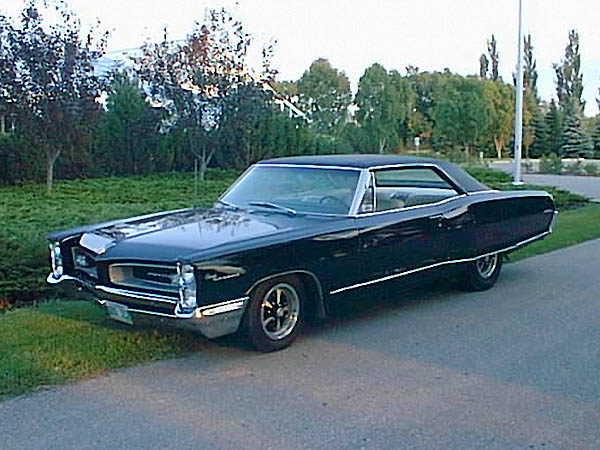 This Grande Parisienne is the pride of Brian Vandijk from Manitoba, Canada. It has recently been repainted, has a near perfect interior, the standard Strato-Flash 283 cid (4,637 cc) V8 engine and a 2-speed Powerglide automatic transmission with console shift. With this power train the car had 195 hp. This Grande Parisienne is the pride of Brian Vandijk from Manitoba, Canada. It has recently been repainted, has a near perfect interior, the standard Strato-Flash 283 cid (4,637 cc) V8 engine and a 2-speed Powerglide automatic transmission with console shift. With this power train the car had 195 hp.
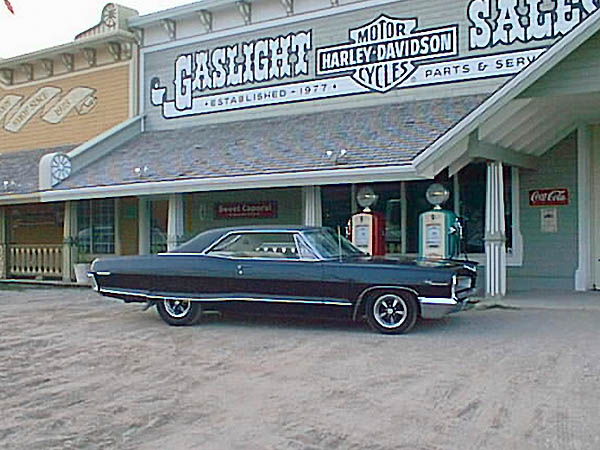 According
to Mr. Bill Watson from Vancouver, Canada the Grande Parisienne was the top of
the line in the 1966 Canadian Pontiac range. Its exterior trim and roof
line was based on the U.S. Pontiac Grand Prix, but the interior was an amalgam
of Grand Prix and Chevrolet Impala SS/Caprice parts. Additionally, the Canadian
Pontiacs were based on the 119 inch wheelbase chassis of Chevrolet rather than
the 122 inch Pontiac chassis and used Chevrolet engines and transmissions.
Because of the Chevrolet underpinnings the Canadian Pontiacs did not have the
typical U.S. Pontiac's "Wide-Track" features, and so the more narrow
track width is a main distinction between the Canadian and the U.S. Pontiacs. According
to Mr. Bill Watson from Vancouver, Canada the Grande Parisienne was the top of
the line in the 1966 Canadian Pontiac range. Its exterior trim and roof
line was based on the U.S. Pontiac Grand Prix, but the interior was an amalgam
of Grand Prix and Chevrolet Impala SS/Caprice parts. Additionally, the Canadian
Pontiacs were based on the 119 inch wheelbase chassis of Chevrolet rather than
the 122 inch Pontiac chassis and used Chevrolet engines and transmissions.
Because of the Chevrolet underpinnings the Canadian Pontiacs did not have the
typical U.S. Pontiac's "Wide-Track" features, and so the more narrow
track width is a main distinction between the Canadian and the U.S. Pontiacs.
Also the prices of the Canadian Pontiacs were lower than those of the U.S.
Pontiacs and more in line with Chevrolet prices. This may have been a reason for
exporting some Canadian instead of U.S. Pontiac models to Europe, so Mr. Watson
remarks.
I'd like to thank Mr. Vandijk en Mr. Watson very much for submitting their input.
|
